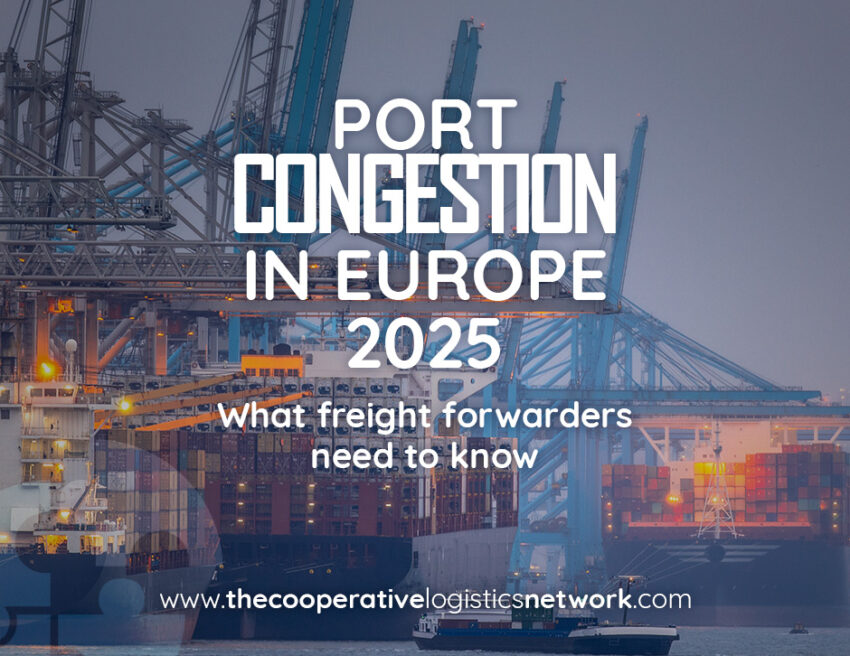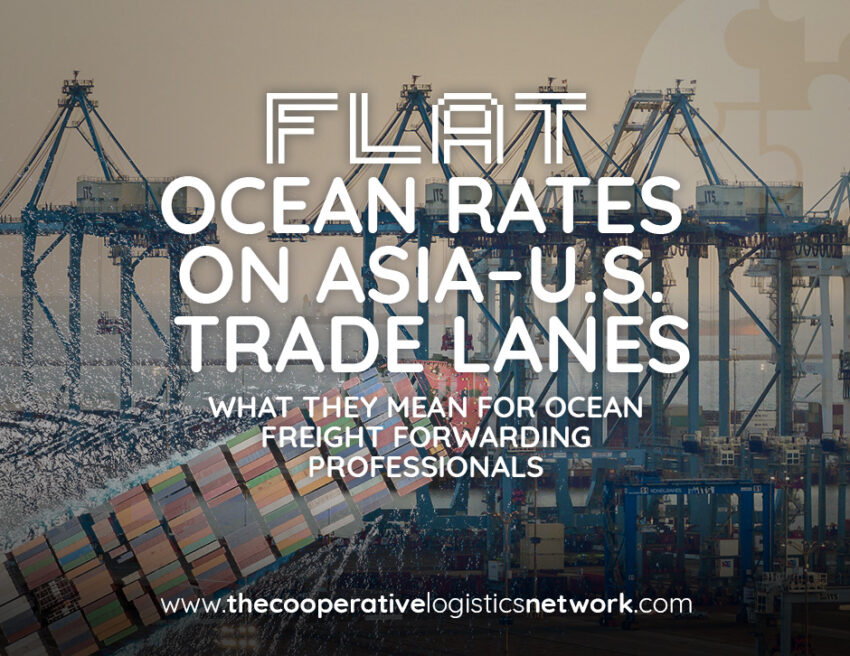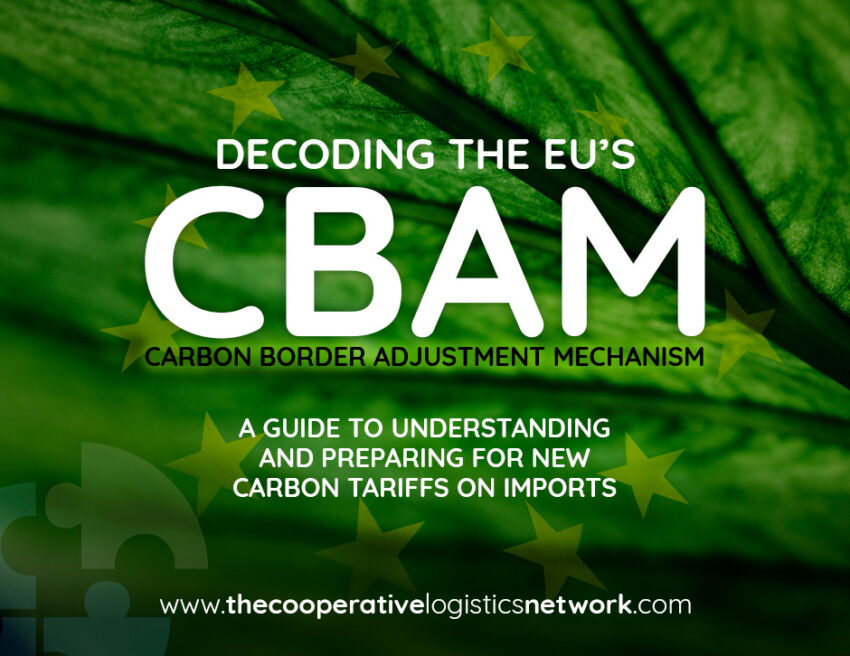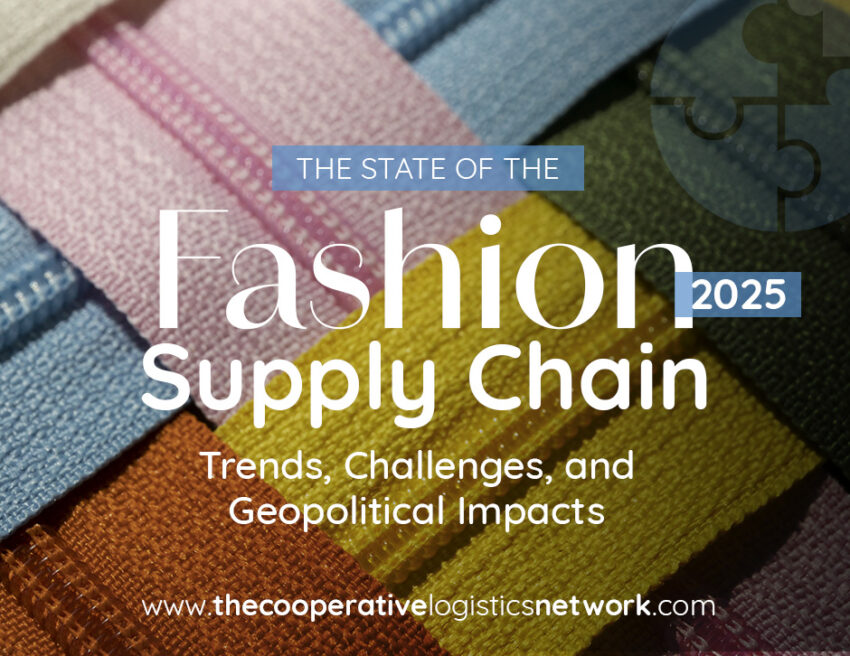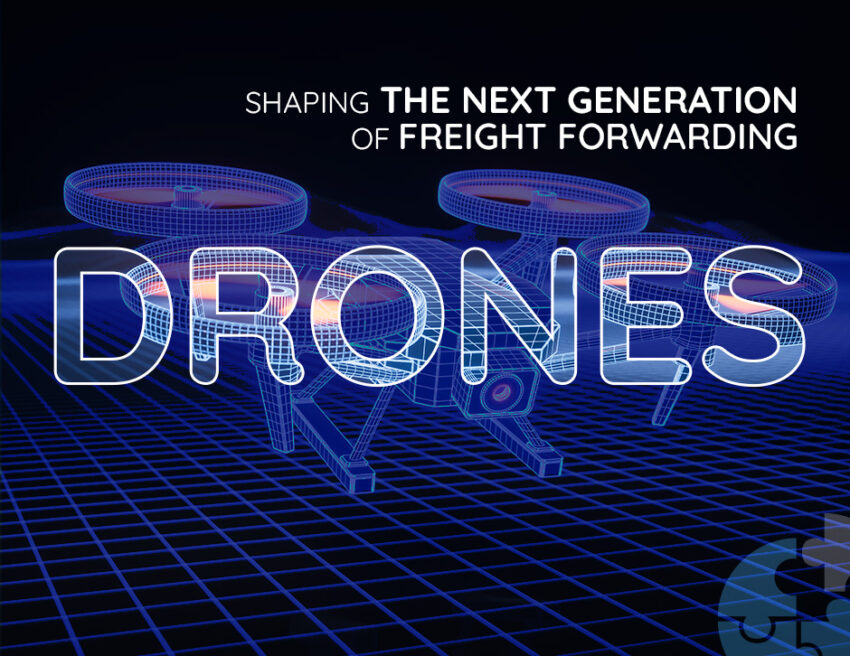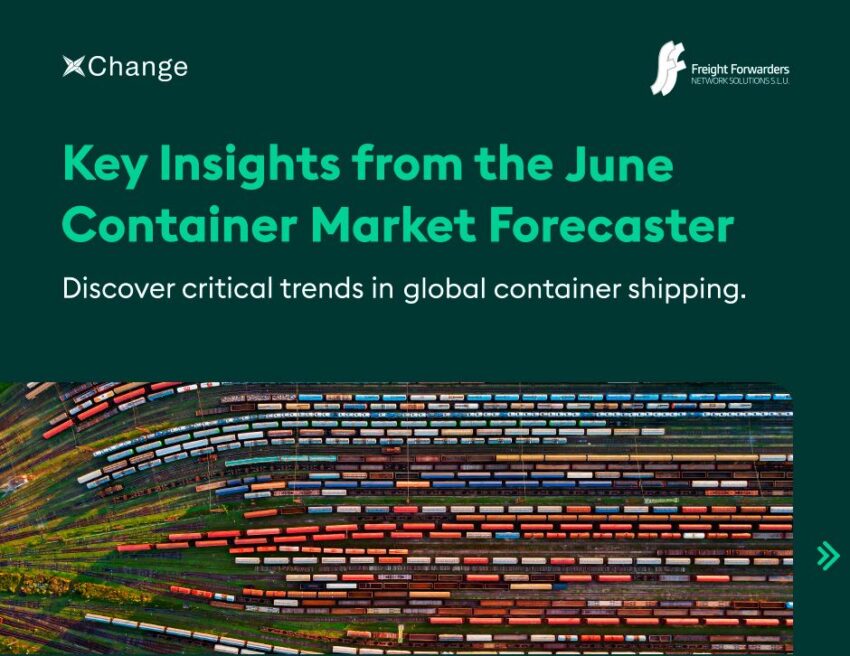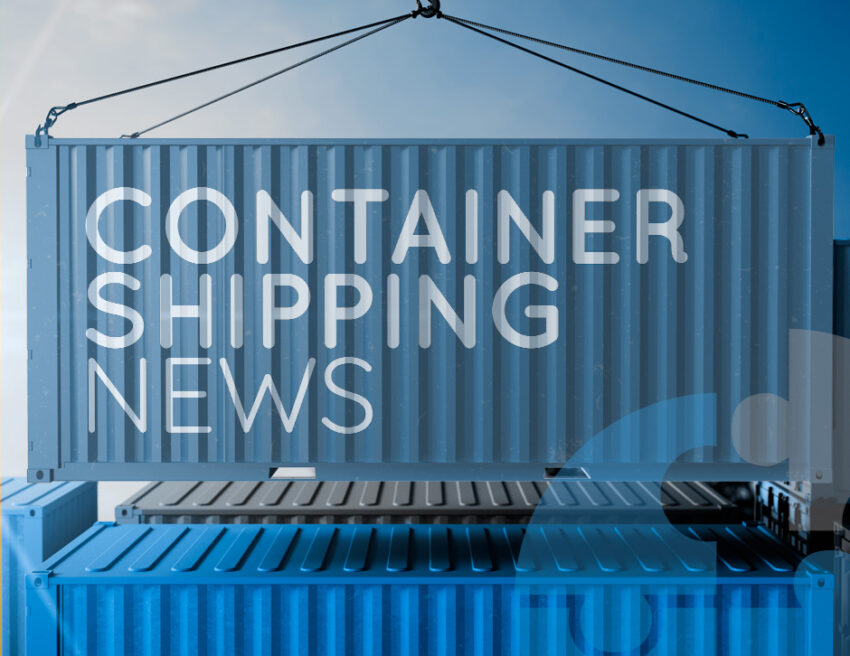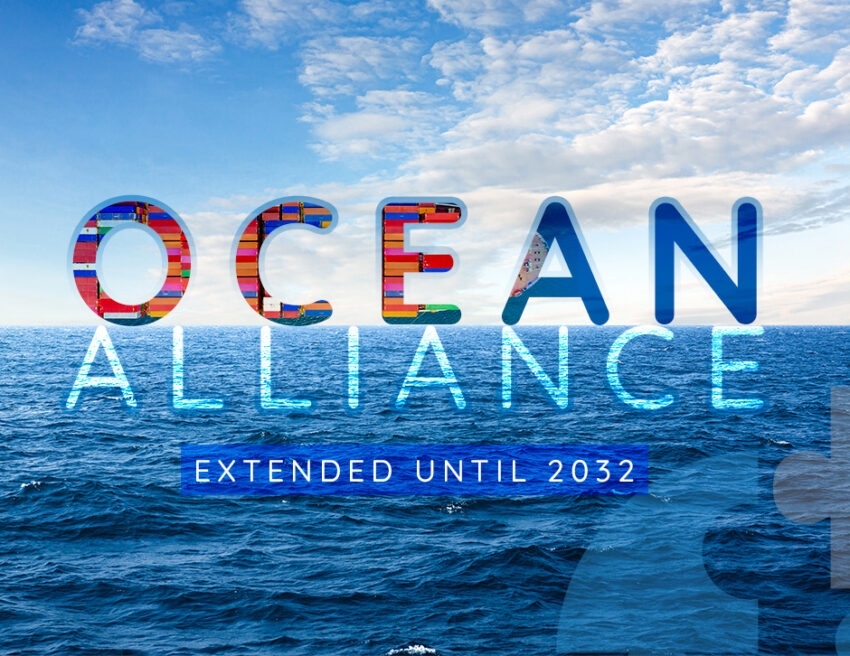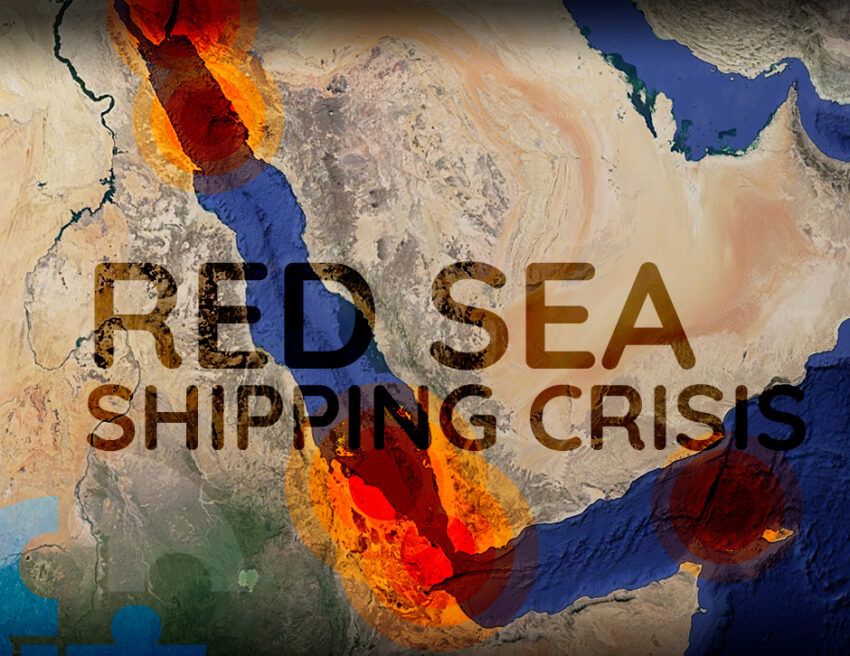The congestion in European ports in 2025 has reached a critical level, disrupting trade routes across the continent and creating ripple effects far beyond the region. Major ports in Northern Europe such as Bremerhaven, Antwerp, Hamburg, and Rotterdam, are experiencing severe delays, with average berth waiting times increasing between 37% and 77% in just a…
The Cooperative blog
Category: Logistics news
What Flat Ocean Rates on Asia–U.S. Trade Lanes Mean for Ocean Freight Forwarding Professionals
If you’re an independent freight forwarder working in ocean freight forwarding, the recent news about spot rate stability on Asia–U.S. trade lanes might seem like a welcome break from volatility. But the reality is far more complex. According to Xeneta, average container spot rates from Asia to the U.S. West and East Coasts have held…
Decoding the EU’s CBAM for freight forwarders: A guide to understanding and preparing for new carbon tariffs on imports
As the world accelerates its shift toward decarbonization, the European Union has introduced one of the most ambitious climate policies to date: the Carbon Border Adjustment Mechanism (CBAM). For freight forwarders involved in international trade, this new framework is more than just a distant policy—it has immediate implications for import processes, documentation, and client communication….
The State of the Fashion Supply Chain in 2025: Trends, Challenges, and Geopolitical Impacts
The fashion industry has always been a fast-paced, ever-evolving sector, but in 2025, the supply chain supporting it is undergoing some of the most dramatic transformations seen in recent years. From shifting consumer expectations to geopolitical turbulence, freight forwarders must navigate an increasingly complex landscape. Fashion supply chains are facing immense pressure in 2025 due…
Understanding DDP Incoterm: Simplifying International Trade with Delivery Duty Paid
Think about the last time you ordered a product from abroad. Maybe it was a beautifully crafted leather bag from Italy or a unique gadget from Japan. You tracked your package eagerly, but when it finally arrived, a surprise awaited—an unexpected customs bill, just to get your hands on your eagerly anticipated purchase. Now, imagine…
How Drones Will Shape the Next Generation of the Freight Forwarding Industry
Drones, once primarily associated with military or recreational use, are poised to revolutionize the freight forwarding industry. As technological advancements continue to push the boundaries of what drones can accomplish, these aerial vehicles are becoming a crucial tool in the logistics supply chain. From enhancing last-mile delivery to optimizing warehouse operations, drones are set to…
Navigating the Surge in Ocean Freight Shipping Rates: Insights from Container xChange
The ocean freight shipping industry is currently experiencing a profound upsurge in rates. For the first time since the lockdowns of 2020, container shipping rates are nearing record highs, driven by a confluence of factors. These include limited container supply due to rerouting around the Red Sea, robust demand across multiple regions, and significant operational…
Latest Container Shipping Industry News that Independent Freight Forwarders Should be Aware of
As we are approaching the end of the first quarter of 2024, now is an opportune time to delve into the latest developments within the container shipping industry, which significantly impact the global supply chain. This article serves as a comprehensive overview, offering insight into major logistics news shaping the freight forwarding industry landscape worldwide….
The Extension of Ocean Alliance and How It will Benefit the Ocean Freight Industry
The Ocean Alliance, the largest ocean freight shipping alliance comprising leading carriers, has extended its agreement by five years, reinforcing its commitment to partnership and collaboration. On February 27th, the CEOs of carriers like COSCO Shipping, OOCL, CMA CGM, and Evergreen met in Shanghai to sign a MOU agreeing to extend the OCEAN Alliance until…
The Red Sea Shipping Crisis: A Comprehensive Guide for Ocean Freight Forwarders
Since November, Yemen’s Houthi rebel group has been targeting vessels passing through the Strait of Bab al-Mandab. This strait is a 20-mile (32km) wide channel that separates northeast Africa from Yemen on the Arabian Peninsula. The Strait of Bab al-Mandab is a critical maritime chokepoint, and any disruptions in this area can have significant implications…


